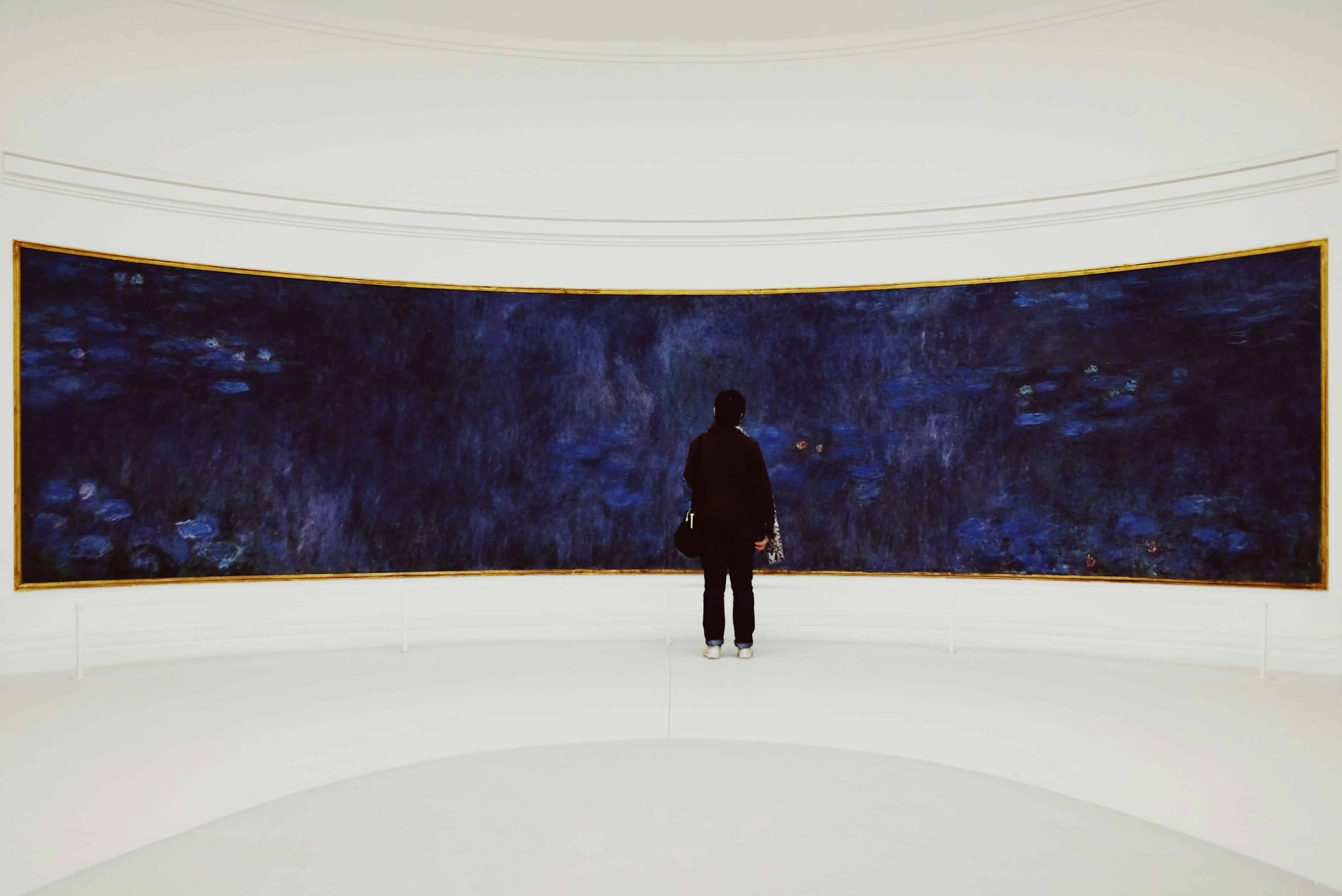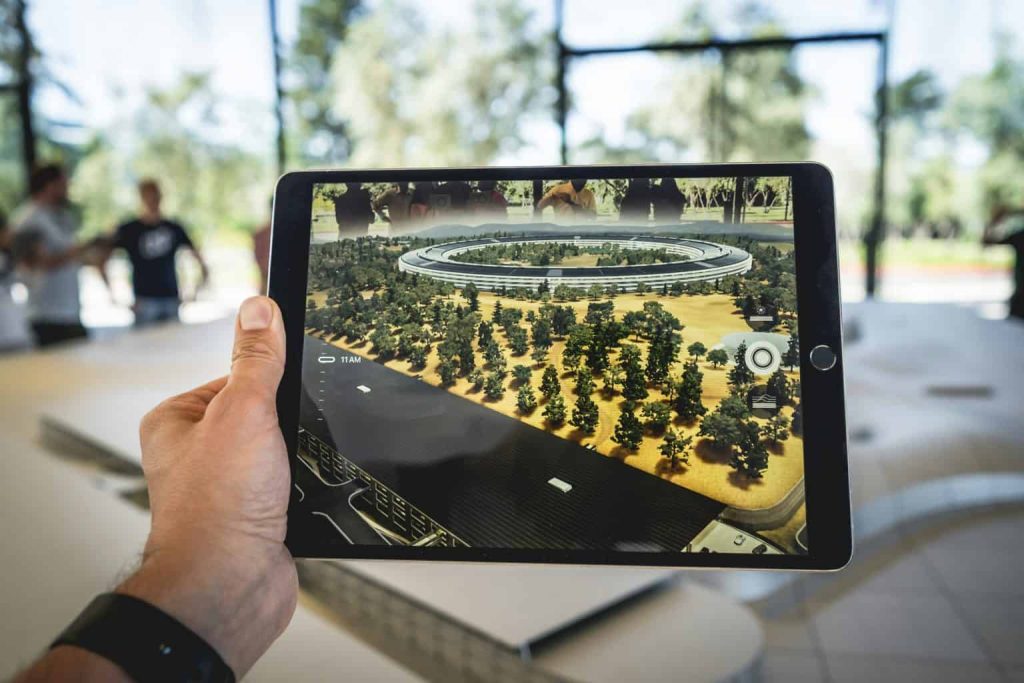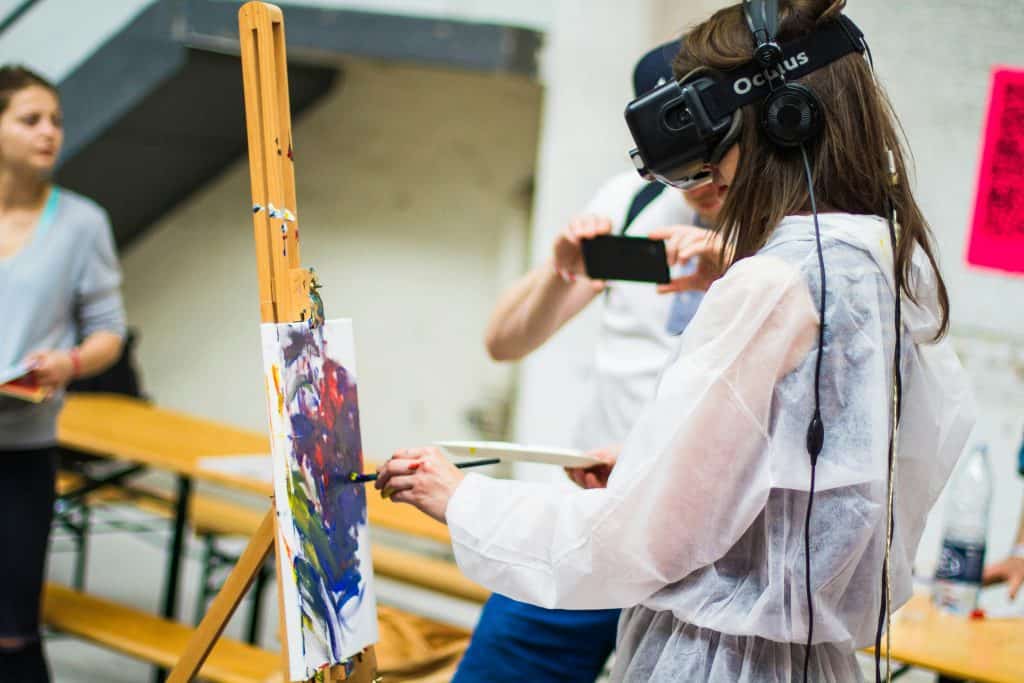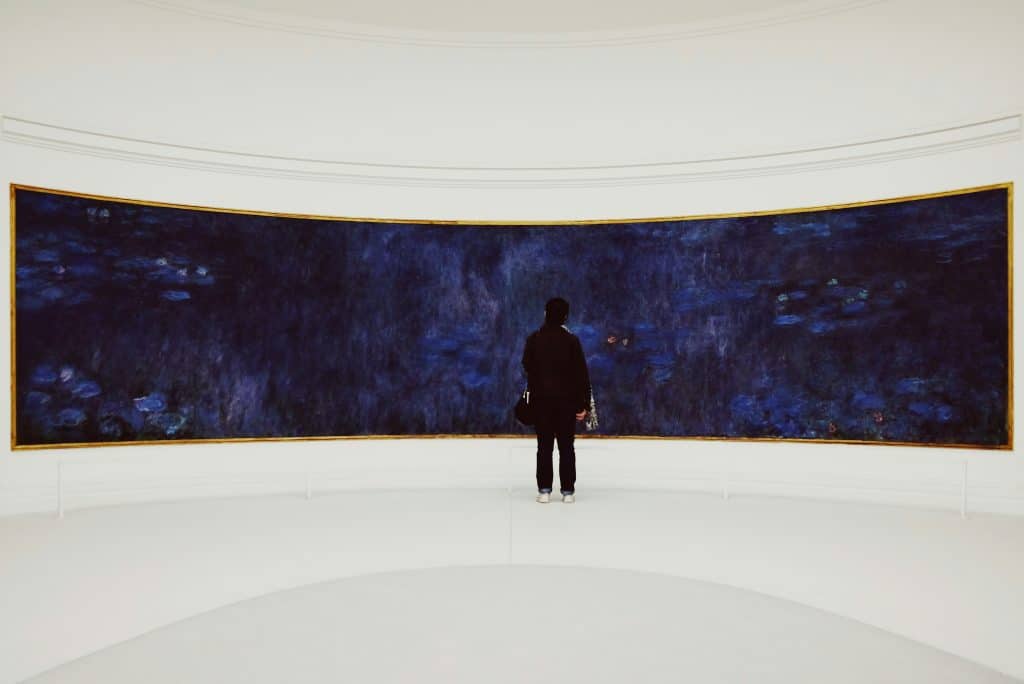
08 Feb Utilizing Augmented Reality in Art Promotion
Augmented Reality (AR) is reshaping the art world by seamlessly integrating digital elements into physical artistic expressions. This transformative technology goes beyond traditional boundaries, offering artists a powerful tool to engage audiences through interactive and dynamic experiences. AR’s influence extends across diverse art forms, from paintings to installations, challenging conventional notions and inviting spectators to become active participants in the artistic narrative.
AR is evidence of the symbiotic link between innovation and art in this age of fast technological growth. Its capacity to transcend conventional media improves aesthetic appeal, democratizes art access, and gives viewers a life-changing experience. The possibilities appear endless as we explore the enhanced art spheres; they provide a window into a future in which the lines separating reality from fantasy are blurred, resulting in a very open and accessible artistic environment.
Types of Interactive AR Experiences for Art Promotion

Photo by Marcus Bellamy
Overlaying Digital Elements on Physical Artworks
Augmented Reality (AR) introduces a transformative layer to the world of traditional artworks, breathing dynamic life into static pieces. By utilizing AR technology, viewers can point their devices at paintings and experience a fusion of the physical and digital realms. This immersive encounter goes beyond the two-dimensional canvas, revealing 3D animations or unraveling hidden narratives that lie beneath the surface of the artwork. The integration of interactive puzzles and games, intricately linked to the visual components of the art, elevates the viewer’s experience, turning passive observation into an engaging and participatory venture.
AR Galleries and Exhibitions
Virtual art exhibitions, accessible through the convenience of smartphones or tablets, revolutionize the way art is presented and consumed. These digital galleries transcend the limitations of physical space, bringing masterpieces to a global audience. As users explore these virtual realms, they are not merely scrolling through static images; instead, they embark on interactive tours enriched with historical context. Gamified elements within the virtual gallery setting transform the act of viewing art into an educational and entertaining journey, making the appreciation of art a dynamic and accessible experience for audiences worldwide.
Art in Public Spaces
Augmented Reality redefines public art by introducing an interactive dimension to the urban landscape. Murals and street art take on a new life as animations are triggered by the viewer’s geographical location. Imagine a stroll through the city where sculptures respond to touch or movement, creating a multisensory experience for passersby. Furthermore, AR-driven scavenger hunts tied to public installations turn the entire city into an expansive canvas for exploration, encouraging people to actively engage with and discover art in unexpected locations. This integration of AR in public spaces transforms the environment into a dynamic and ever-evolving exhibition.
Personalized Art Experiences
Augmented Reality empowers users to transition from passive observers to active creators in the realm of art. Collaborative projects and dedicated apps enable individuals to contribute to larger AR artworks, fostering a sense of community and shared creativity. Filters and applications provide tools for users to craft their own unique pieces, drawing inspiration from established masterpieces. Additionally, virtual try-on experiences allow users to visualize artworks within the context of their personal spaces, offering a tailored and interactive connection with art. This personalized approach enhances the user’s sense of ownership and connection, transforming the act of art appreciation into a collaborative and individualized endeavor.
Benefits of Using AR for Art Promotion

Photo by Patrick Schneider
Increased Engagement
Augmented Reality (AR) has the remarkable ability to captivate audiences by transforming traditional art experiences into immersive and interactive encounters. By overlaying digital elements onto the physical world, AR breathes new life into artworks, making them more engaging and accessible to a wider audience. Viewers can explore, interact, and connect with art in ways that go beyond the constraints of conventional mediums, fostering a heightened level of engagement.
Breaking Barriers
One of the most significant advantages of AR in the realm of art is its capacity to break down comprehension barriers. Traditional art forms may be intimidating or challenging to understand for certain individuals, but AR provides a bridge that enhances accessibility. Through augmented layers of information, explanations, or interactive features, AR makes art appreciation more inclusive by catering to diverse audiences with varying levels of familiarity or expertise.
Expanded Reach
AR transcends the confines of physical spaces, democratizing art and extending its reach to a global audience. Geographical limitations are no longer a hindrance as individuals from different corners of the world can experience and appreciate art virtually. This expanded reach not only benefits artists and creators but also enriches cultural exchange by enabling the sharing of diverse artistic expressions on a global scale.
Memorable Experience
The integration of AR into art results in the creation of unique and memorable experiences for viewers. Beyond the static nature of traditional art forms, AR introduces dynamic elements, interactivity, and personalization that leave a lasting impression. Viewers become active participants in the artistic narrative, forging a deeper and more meaningful connection with the artwork. These memorable experiences contribute to a heightened appreciation for art and encourage continued exploration.
Monetization Opportunities
AR not only enhances the artistic experience but also opens up new avenues for monetization within the art world. Features such as virtual purchases, exclusive AR content, or interactive elements can be leveraged to generate revenue. Artists, museums, and galleries can explore innovative ways to monetize their creations, reaching a broader audience and diversifying their income streams. This presents a paradigm shift in the traditional art market, offering exciting opportunities for financial sustainability and growth.
Challenges and Considerations in Implementing AR Art Promotion

Photo by Billetto Editorial
Technical Requirements
Ensuring technical accessibility involves optimizing digital content and interactive features to function seamlessly across a diverse range of devices and platforms. This includes compatibility with various operating systems, browsers, and screen sizes. Additionally, efforts are made to consider different levels of technical proficiency among users, ensuring that the interactive elements are not overly demanding in terms of hardware specifications or software requirements. The goal is to make the digital experience inclusive and easily accessible to users with varying degrees of technological expertise.
User-Friendly Experience
Achieving a user-friendly experience involves careful consideration of the interface’s design, navigation, and overall usability. While integrating interactive elements, developers aim to strike a balance between providing depth and complexity in the content without overwhelming users. Intuitive design principles, clear instructions, and responsive layouts contribute to a seamless and enjoyable user experience. This approach ensures that users can easily engage with the interactive content, fostering a positive and accessible digital environment.
Artistic Integrity
Maintaining artistic integrity is crucial when incorporating interactive elements into digital content. This requires a delicate balance between enhancing the user experience through interactivity and preserving the core artistic vision of the original work. Developers and designers collaborate closely with artists to ensure that interactive features complement the artwork, rather than overshadowing or distorting its intended meaning. This collaborative process aims to enhance the overall aesthetic and narrative, respecting the artistic intent while introducing innovative interactive elements.
Copyright Issues
Addressing copyright concerns involves a thorough understanding and adherence to intellectual property laws and regulations. Developers and content creators need to secure the necessary permissions and licenses for incorporating interactive elements into copyrighted artworks. Clear documentation of ownership, licensing agreements, and proper attribution mechanisms are implemented to avoid legal complications. By respecting copyright laws, digital content developers ensure that interactive features enhance the user experience without infringing on the rights of the original creators, fostering a responsible and legally compliant digital environment.

Photo by Stijn te Strake
Conclusion
Augmented reality, or AR, is revolutionizing the way people view and interact with art by acting as a catalyst for life-changing experiences in the field of art promotion. The interactive AR applications on display, including the creation of virtual galleries and the overlaying of digital components on real artworks, highlight the technology’s potential to enthrall audiences and promote accessibility to art worldwide. AR has a significant positive influence on enhancing creative interactions, as evidenced by its benefits, which range from increased engagement to wider reach and revenue options. But for integration to be effective, issues including user-friendliness, addressing copyright issues, and technological needs must be carefully considered.
In this symbiotic relationship between innovation and authenticity, AR unfolds as a guiding beacon, propelling the future of art promotion into a captivating and inclusive journey through uncharted creative realms.
Key Takeaways
Increased Engagement | AR captivates audiences, making art more engaging and accessible. |
Breaking Barriers | AR breaks down comprehension barriers, making art appreciation more inclusive. |
Expanded Reach | AR transcends physical limitations, bringing art to a global audience. |
Memorable Experiences | AR creates unique and memorable experiences, fostering a deeper connection with art. |
Monetization Opportunities | AR features and virtual purchases provide avenues for monetization. |
Technical Requirements | Ensuring devices and technology are accessible to a wide audience. |
User-Friendly Experience | Striking a balance between complexity and user-friendliness. |
Artistic Integrity | Preserving the essence of the artwork while integrating interactive elements. |
Copyright Issues | Addressing ownership and copyright concerns related to digital content. |
FAQs
How does AR enhance engagement with art?
AR enhances engagement with art by introducing an interactive dimension to the viewing experience. Through the integration of augmented reality, art becomes a dynamic and immersive encounter, incorporating 3D animations, revealing hidden narratives, and even incorporating games related to the artworks. This not only captivates the audience but also fosters a deeper connection by allowing individuals to actively participate in the artistic narrative.
Can AR be used for public art installations?
Absolutely, AR is a powerful tool for enhancing public art installations. By utilizing location-based triggers, touch-responsive sculptures, and incorporating elements like scavenger hunts linked to installations, AR transforms static public art into dynamic and participatory experiences. This not only engages the public on a deeper level but also encourages exploration and interaction within the urban environment.
What challenges are faced in implementing AR for art promotion?
Implementing AR for art promotion presents several challenges, including technical requirements, ensuring user-friendly experiences, preserving artistic integrity, and addressing copyright concerns. Ensuring that the technology is accessible and user-friendly is crucial to reaching a broad audience, while maintaining the artistic essence and addressing copyright issues are essential for a successful and ethically sound AR art promotion strategy.
Are there successful examples of AR in art promotion?
Yes, there are numerous successful examples of AR being used in art promotion globally. Museums, galleries, and individual artists have effectively employed AR to enhance the visibility and appreciation of art. Various case studies showcase the positive impact and tangible results of integrating AR into art promotion, serving as inspiration and providing valuable insights for future endeavors in the realm of augmented reality and the arts.
Take a “Virtual Tours of Renowned Art Collections”, that compels a compelling and easily accessible experience that cuts across geographical limitations.

